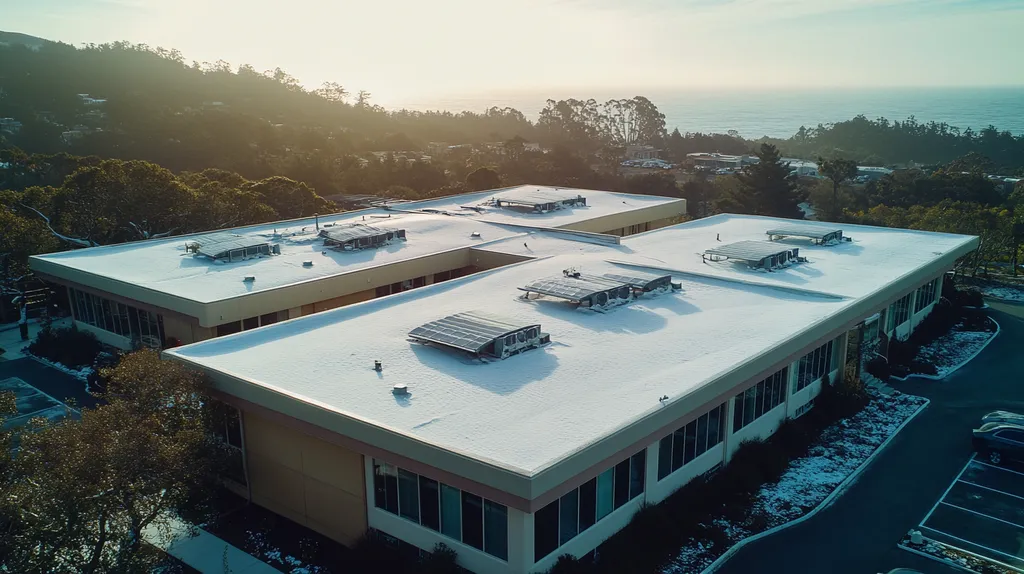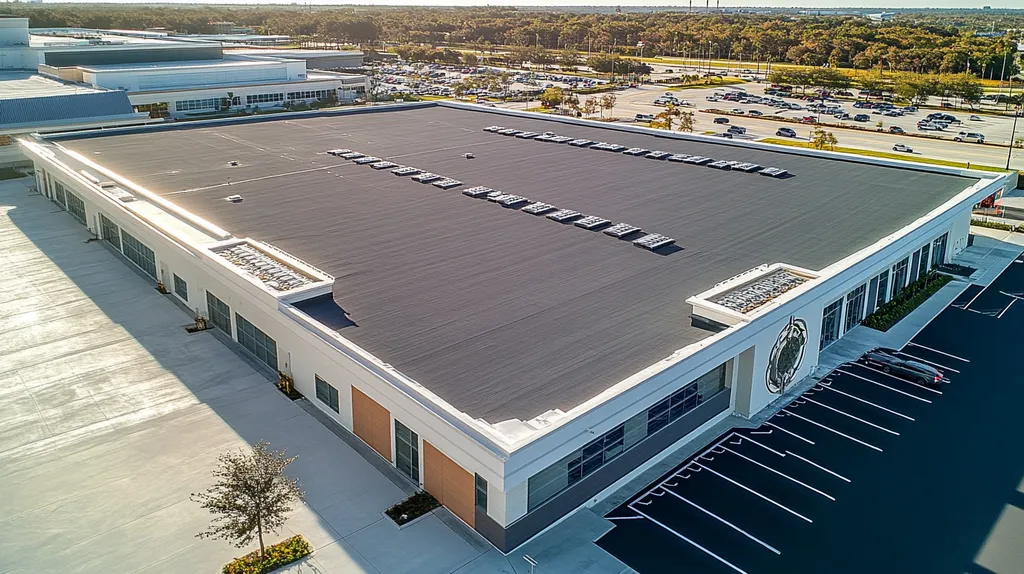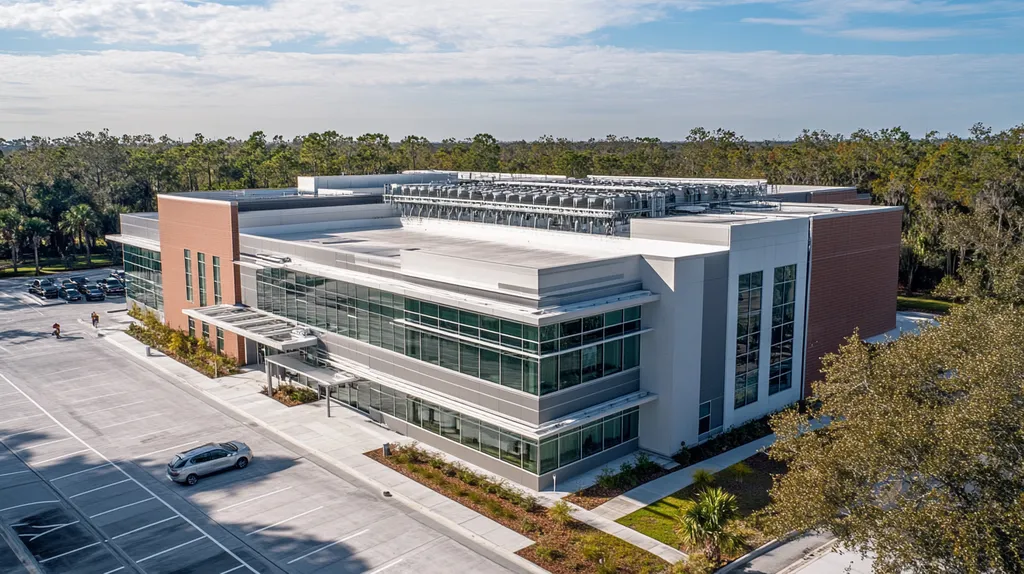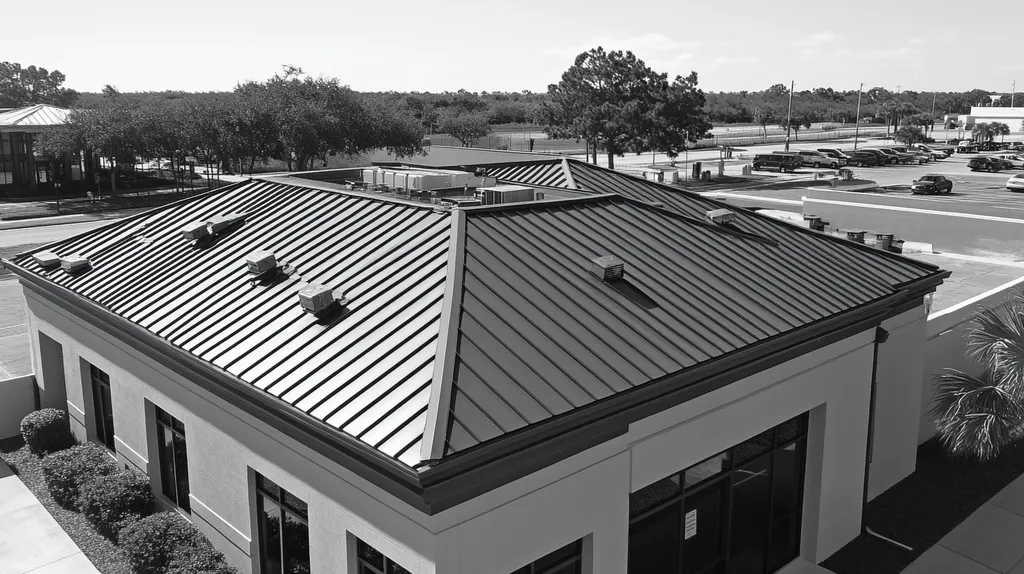In today’s industrial facilities, every hour of roof coating downtime can cost upwards of $2,000 in lost productivity, with some manufacturing plants facing losses exceeding $50,000 per day.
While protective roof coatings are essential for facility longevity, poorly managed applications can extend project timelines by 300% and lead to premature coating failure within 18 months.
This comprehensive guide examines proven strategies for minimizing operational disruption during industrial roof coating projects, from material selection and surface preparation to workflow optimization and performance monitoring.
SECTION 1: FUNDAMENTAL CONCEPTS
Industrial roof coating projects demand meticulous planning and execution to minimize operational disruptions. Every hour of downtime can cost facilities thousands in lost productivity, with manufacturing plants often facing losses exceeding $50,000 per day. Understanding core concepts and following proper protocols not only ensures coating success but also maintains business continuity throughout the application process.
Understanding Roof Coating Functions and Benefits
Modern roof coatings serve as a facility’s first line of defense against environmental stressors. These specialized materials create seamless, waterproof barriers that protect underlying roofing systems from UV damage, moisture infiltration, and thermal shock.
Performance coatings can reduce roof surface temperatures by up to 50 degrees Fahrenheit through solar reflectance. This temperature reduction directly translates to lower cooling costs and extended roof life expectancy.
Many coating systems also provide chemical resistance, crucial for facilities with industrial exhaust systems. This protection prevents premature degradation from acid rain, chemical deposits, and industrial emissions.
Strategic coating selection can transform an aging roof into a high-performance asset, often extending service life by 10-15 years while improving building energy efficiency.
Identifying Critical Pre-Application Site Conditions
Successful coating applications begin with thorough surface preparation and testing. An elastomeric roof coating cannot offset poor surface preparation, with solvent-based materials showing better tolerance for challenging surfaces than water-based products. (source: Facilitiesnet)
Environmental conditions significantly impact coating performance. Temperature must typically fall between 50-90°F, with relative humidity below 85% for optimal curing.
Surface moisture testing using digital meters and adhesion testing through pull tests are essential pre-application steps. These measurements prevent coating failures that could compromise facility operations.
Drainage patterns and ponding water locations must be mapped and addressed before coating begins. Standing water can degrade even the most advanced coating systems.
Assessing Coating Compatibility with Existing Roof Systems
Different roofing substrates require specific coating formulations for proper adhesion. Single-ply membranes like TPO need different primers and coating systems than modified bitumen or metal roof surfaces.
Age and condition of the existing roof significantly influence coating compatibility. Weathered surfaces often require specialized preparation techniques and primer systems to ensure proper coating adhesion.
Chemical exposure from facility operations can affect coating selection. Areas near exhaust vents or chemical storage may need enhanced resistance properties compared to general roof areas.
Testing coating compatibility through sample applications helps verify performance before full-scale installation. This approach identifies potential issues while minimizing risk to facility operations.
SECTION 2: SYSTEM COMPONENTS
Industrial roof coating success hinges on selecting and integrating the right system components. Studies show that 40% of coating failures stem from improper material selection or incompatible component combinations. Each component decision impacts not only performance but also application speed and disruption levels. Understanding these critical elements helps facility managers avoid costly delays and ensure successful installations.
Core Coating Material Types and Properties
Industrial coating materials fall into three primary categories: acrylics, polyurethanes, and silicones. Each offers distinct advantages for specific facility conditions and operational requirements.
Acrylic coatings provide excellent UV resistance and reflectivity while offering the fastest application times. These water-based formulations typically require temperatures above 50°F for proper curing but can reduce facility cooling costs by up to 30%.
Polyurethane systems deliver superior impact resistance and chemical protection, crucial for manufacturing environments. Their longer cure times demand careful scheduling but result in exceptionally durable finishes that resist industrial pollutants.
Silicone coatings excel in extreme temperature variations and offer the best ponding water resistance. While generally more expensive, their single-coat application can significantly reduce installation time and facility disruption.
Reinforcement Layers and Fleece Integration
Strategic reinforcement placement strengthens coating systems at their most vulnerable points. Polyester or fiberglass fleece materials create a continuous membrane that bridges gaps and prevents coating splits.
Modern fleece systems feature self-adhering properties that dramatically reduce installation time. This advancement allows teams to cover larger areas more quickly while maintaining system integrity.
Critical stress points around HVAC units, pipes, and roof penetrations require specialized reinforcement details. Proper integration at these locations prevents future leaks that could disrupt facility operations.
The thickness and type of reinforcement directly impact coating longevity. Heavier fleece materials provide better puncture resistance but require longer installation times, necessitating careful balance with operational schedules.
Primer Systems and Adhesion Promoters
Specialized UV-resistant primers create the foundation for lasting coating performance. These products not only enhance adhesion but also provide an additional layer of protection against degradation and color fading. (source: Aquila Commercial)
Modern quick-cure primers can reduce traditional waiting periods by up to 75%. This acceleration allows coating application to begin sooner, minimizing overall project duration.
Surface-specific primers address unique substrate challenges like rust, oxidation, or residual adhesives. Proper primer selection eliminates costly surface preparation steps that could extend project timelines.
Two-component adhesion promoters create chemical bonds that significantly outperform mechanical adhesion alone. While requiring precise mixing, these systems provide insurance against premature coating failure and subsequent business interruption.
SECTION 3: IMPLEMENTATION METHODS
Industrial roof coating implementation requires precise execution to prevent costly disruptions. Studies show that improper application methods can extend facility downtime by 300% and lead to premature coating failure within 2-3 years. Strategic implementation not only ensures coating longevity but can reduce application time by up to 40% when properly orchestrated.
Surface Preparation Protocols for Maximum Adhesion
An elastomeric roof coating cannot offset poor surface preparation, with solvent-based materials showing better tolerance for challenging surfaces than water-based products. Proper surface preparation through pressure washing, solvent cleaning, and mechanical abrasion creates optimal bonding conditions. (source: Facilitiesnet)
Digital moisture mapping and infrared scanning identify areas of trapped moisture that could compromise coating adhesion. These technologies allow teams to target problem areas while maintaining workflow in unaffected zones.
Surface profile measurements using depth gauges ensure proper mechanical bonding characteristics. This data helps determine primer requirements and coating thickness specifications for maximum durability.
Systematic cleaning protocols remove industrial contaminants, oils, and process residues that inhibit coating adhesion. Specialized cleaning agents matched to specific contaminants reduce preparation time while ensuring thorough surface conditioning.
Multi-Coat Application Techniques and Timing
Precise coating thickness control through automated spray systems reduces material waste while ensuring uniform coverage. Digital thickness monitoring during application prevents under-application that could lead to premature failure.
Strategic sectioning of large roof areas into manageable application zones maintains wet edges for proper coating fusion. This approach allows continued facility operations in uncoated areas while work progresses.
Integration of rapid-cure catalyst systems can reduce inter-coat waiting times by up to 60%. These advanced formulations maintain coating integrity while accelerating project completion.
Quality control checkpoints between coating layers verify proper cure rates and adhesion. Regular pull testing confirms coating bond strength before proceeding with subsequent layers.
Weather Window Planning and Temperature Thresholds
Advanced weather monitoring systems provide hour-by-hour forecasting for precise application scheduling. Real-time alerts help crews adjust work zones to maximize productive coating time.
Temperature and humidity logging throughout the application process ensures optimal curing conditions. Digital monitoring prevents application during adverse conditions that could compromise coating performance.
Wind speed monitoring protects against overspray risks that could damage facility equipment or vehicles. Portable wind screens and strategic scheduling minimize these disruption risks.
Integration of dew point calculation tools prevents condensation-related coating failures. Continuous monitoring ensures surface temperatures remain above dew point for proper coating adhesion and cure.
SECTION 4: MAINTENANCE REQUIREMENTS
Proper maintenance of industrial roof coatings directly impacts facility uptime and operational continuity. Studies show that neglected coating systems fail 3-4 times faster than properly maintained ones, with emergency repairs costing up to 5 times more than scheduled maintenance. Strategic maintenance protocols not only extend coating life but also prevent the cascading operational disruptions that accompany unexpected roofing failures.
Inspection Schedules for Coating Integrity Checks
Quarterly inspections form the foundation of effective coating maintenance, with additional checks required after severe weather events. Digital documentation using standardized assessment forms ensures consistent evaluation across inspection cycles.
Thermal imaging and moisture scanning technology can detect subsurface issues before they manifest as visible problems. Early detection through these methods prevents coating delamination that could shut down production areas.
Core sampling and adhesion testing at predetermined intervals verify ongoing coating performance. These objective measurements provide early warning of potential system failures that could impact operations.
Inspection timing should align with facility maintenance schedules to minimize operational interference. Dawn and dusk inspections often provide optimal lighting conditions for detecting surface anomalies while avoiding peak production hours.
Procedures for Localized Repair and Patching
Industrial roof coatings like Delcote® and Seamsil® offer specialized solutions for metal roof maintenance, providing critical protection against UV damage and corrosion when properly maintained. These systems require specific repair protocols to maintain their protective properties. (source: HD Sharman)
Surface preparation for patch areas must extend beyond visible damage to ensure proper adhesion. Cleaning and abrading a minimum 6-inch perimeter around damaged zones prevents repair failure.
Compatibility testing between repair materials and existing coatings prevents chemical reactions that could compromise the system. Sample applications on small areas confirm proper curing and adhesion before full repairs begin.
Quick-setting repair compounds allow facilities to resume normal operations within hours instead of days. These advanced materials maintain full waterproofing properties even during the curing process.
Membrane-Coating Hybrid System Maintenance
Hybrid systems require specialized maintenance protocols that address both membrane and coating components. Regular inspections must focus on transition areas where different materials meet, as these junctions often experience the highest stress.
UV degradation affects membrane and coating materials at different rates, necessitating targeted maintenance approaches. Protection measures may need adjustment based on exposure patterns and wear rates.
Chemical exposure from facility operations can accelerate material breakdown in specific areas. Enhanced cleaning and neutralization procedures prevent premature coating failure in these zones.
Detailed maintenance logs tracking both membrane and coating conditions help optimize repair timing. This data-driven approach prevents unnecessary production interruptions while ensuring system integrity.
SECTION 5: PERFORMANCE METRICS
Performance metrics drive critical decisions in industrial roof coating projects, directly impacting facility operations and maintenance costs. Studies show that improper metric evaluation leads to coating failures within 2-3 years, resulting in production disruptions costing up to $50,000 per day. Understanding and monitoring key performance indicators helps facility managers prevent unexpected failures while maximizing coating longevity and return on investment.
Solar Reflectance and Thermal Emissivity Standards
Solar reflectance ratings measure a coating’s ability to reflect solar radiation, with higher values indicating better heat rejection. Modern coatings can achieve reflectance values above 0.85, meaning 85% of solar energy is reflected rather than absorbed.
Thermal emissivity complements reflectance by measuring how effectively a surface releases absorbed heat. Coatings with emissivity values above 0.90 rapidly shed heat, reducing thermal loads on building cooling systems.
Combined reflectance and emissivity values determine a coating’s Solar Reflectance Index (SRI). Higher SRI ratings translate to cooler roof surfaces, with every 10-point increase reducing peak roof temperatures by approximately 8-10°F.
Regular monitoring of these values through field testing ensures sustained performance. Degradation below specified thresholds signals the need for maintenance or recoating before system failure impacts operations.
Waterproofing Durability Testing Methods
Water-based coatings demand comprehensive moisture testing and surface preparation protocols to prevent adhesion failures. The duct tape test provides quick verification of surface readiness, while plastic sheet testing identifies areas of potential moisture entrapment. (source: Facilitiesnet)
Hydrostatic pressure testing evaluates coating resistance to standing water conditions. This method identifies weak points in the coating system before they can develop into leaks that disrupt facility operations.
Pull adhesion testing measures coating bond strength across different substrate areas. Minimum values of 200 psi indicate adequate adhesion for most industrial applications.
Accelerated weathering chambers simulate years of exposure in weeks, helping predict long-term performance. These tests expose potential failure modes before they manifest in actual service.
Longevity Benchmarks by Coating Type
Silicone coatings lead longevity metrics with 15-20 year performance expectations when properly maintained. Their superior UV stability and moisture resistance make them ideal for harsh industrial environments.
Polyurethane systems typically deliver 10-15 years of service life. Their excellent chemical resistance and flexibility help maintain protection even under challenging conditions.
Acrylic coatings provide 5-10 years of effective service in moderate climates. While offering lower initial costs, they require more frequent renewal to maintain protective properties.
High-build elastomeric coatings bridge the gap between acrylics and silicones, providing 8-12 years of service. Their enhanced thickness provides extra protection against mechanical damage while maintaining cost-effectiveness.
SECTION 6: OPTIMIZATION STRATEGIES
In industrial facilities, optimizing roof coating operations can mean the difference between seamless production and costly shutdowns. Studies show poorly optimized coating projects increase facility downtime by up to 400% and can lead to premature coating failure within 18 months. Strategic optimization not only preserves operational continuity but also maximizes energy efficiency and coating longevity while reducing total ownership costs.
Energy Efficiency Improvement Through Coating Selection
Advanced coating systems can reduce roof surface temperatures by up to 80°F during peak summer conditions. This dramatic temperature reduction translates to immediate HVAC savings and extends the life of rooftop equipment.
Specialized silicone coatings like Delcote® offer superior UV protection while accommodating thermal movement in metal roofing systems. These high-performance solutions prevent heat-related stress and reduce embodied carbon compared to full roof replacement. (source: HD Sharman)
Cool roof coatings with solar reflectance indices above 100 can reduce cooling costs by 25-40% during summer months. This efficiency boost directly impacts operational budgets while supporting corporate sustainability goals.
Strategic coating selection must balance immediate energy savings against long-term performance requirements. Facilities with high process heat or chemical exposure need specialized formulations that maintain reflectivity under harsh conditions.
Workflow Sequencing for Minimal Downtime
Systematic workflow analysis identifies critical production zones requiring uninterrupted operation. This mapping allows coating teams to sequence work around facility schedules while maintaining proper application conditions.
Mobile containment systems enable coating work to continue adjacent to active production areas. These portable barriers prevent overspray while allowing normal operations to continue within feet of the application zone.
Digital project tracking platforms coordinate multiple coating crews across large roof areas. Real-time progress monitoring helps facility managers anticipate and prevent potential operational conflicts.
Integration of rapid-cure coating systems reduces facility exposure by up to 70%. These advanced materials achieve full cure within hours instead of days, dramatically reducing vulnerability to weather events.
Contractor Partnership Models for Continuous Improvement
Performance-based partnerships align contractor incentives with facility uptime goals. These agreements include specific metrics for minimizing operational disruption during coating projects.
Data sharing between facility teams and coating contractors enables predictive maintenance planning. This collaborative approach prevents emergency repairs that could force unscheduled shutdowns.
Regular performance reviews focusing on disruption metrics drive continuous process improvement. Tracking indicators like production impact and coating durability helps refine application strategies over time.
Implementation of shared digital platforms streamlines communication between facility staff and coating teams. Real-time updates and automated alerts prevent scheduling conflicts while maintaining project momentum.
The Bottom Line
With industrial roof coating failures costing facilities up to $50,000 per day in lost productivity, implementing proven disruption minimization strategies is no longer optional—it’s essential for operational survival.
Modern coating technologies and application methods can reduce project timelines by up to 40% while extending roof life by 15-20 years when properly executed.
Success demands meticulous attention to surface preparation, material selection, and environmental conditions throughout the coating process.
By adopting the systematic approaches outlined in this guide, facility managers can transform what was once a major operational disruption into a streamlined process that delivers lasting protection with minimal impact on daily operations.
The future of industrial roof coating lies in predictive maintenance, performance-based partnerships, and data-driven optimization strategies that maximize both coating longevity and facility uptime.
FREQUENTLY ASKED QUESTIONS
Q. How can commercial roof coatings minimize disruption?
A. Meticulous planning and proper material selection are key. Minimizing operational downtimes is crucial, as every hour of disruption can lead to significant productivity losses. Strategic choices in surface preparation and application methods further ensure efficient coating processes and reduced facility interruptions.
Q. What are essential components for an industrial roof?
A. Selecting the right components, such as coatings and primers, ensures optimal adhesion and performance. Incompatible materials can lead to costly reapplications and delays. Understanding your roofing system’s specific needs is vital for successful installations that meet operational demands.
Q. How do implementation methods mitigate disruptions?
A. Precise application techniques greatly reduce downtime and extend coating durability. Surface preparation and multi-coat systems ensure strong adherence and longevity. Adopting a methodical approach during implementation fully supports facility operations while maintaining high-quality outcomes.
Q. Why is maintenance important for industrial roof coatings?
A. Proper maintenance can extend the life of coatings while preventing costly emergency repairs. Regular inspections identify potential issues before they escalate. Timely maintenance is essential to keep roof coatings performing effectively and minimize facility downtime.
Q. What performance metrics should I monitor for coatings?
A. Key metrics include solar reflectance and waterproofing durability. Monitoring these values ensures that coatings retain their effectiveness over time. Regular assessments help prevent unexpected failures and extend the useful life of your roofing system.
Q. How can I optimize my industrial roof coating project?
A. Optimizing involves efficient workflow sequencing and selecting energy-efficient coatings. Using rapid-cure systems reduces downtime significantly. Collaborative planning with contractors can enhance project efficiency while minimizing disruptions, ultimately protecting your facility’s operations.
Q. What should I know about coating compatibility?
A. Compatibility is vital for successful bonding and performance. Different substrates and existing roof conditions impact coating selection. Conducting sample tests can help ensure your materials interact properly, significantly reducing risks of coating failure.










